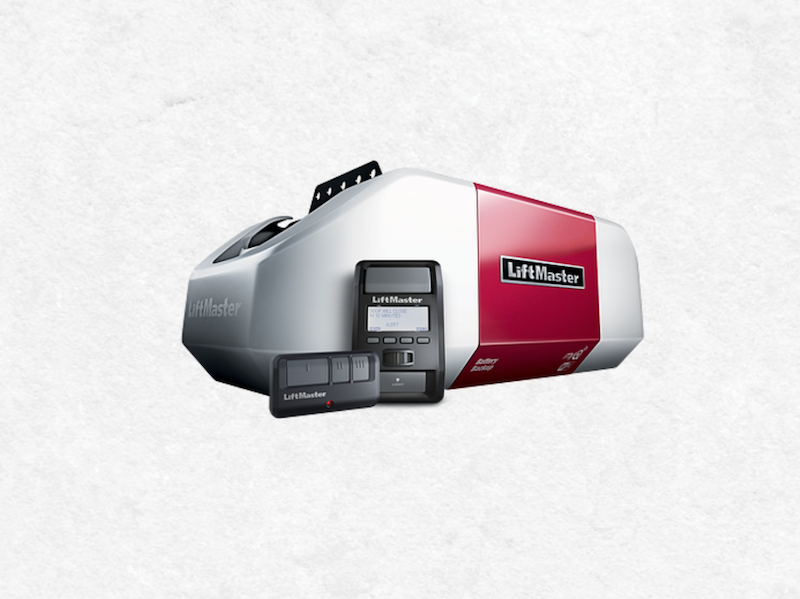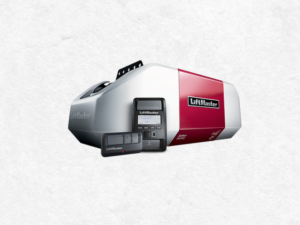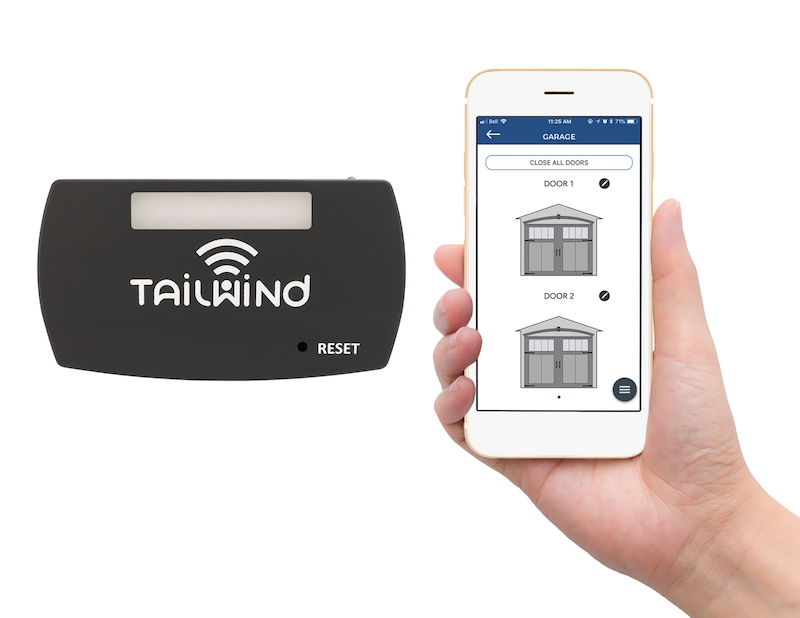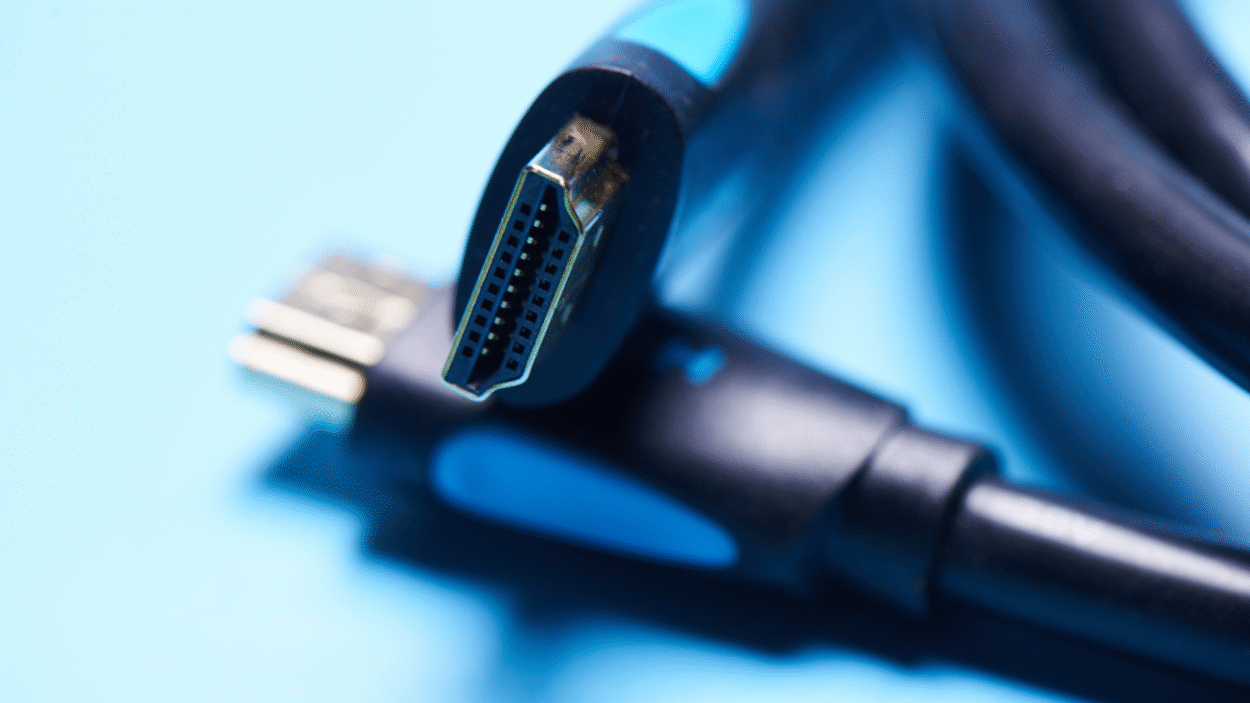A garage can easily become the forgotten stepchild of a smart home. After all, homeowners typically spend very little time there. There are, however, a number of different ways to make an overhead garage door smart. Let’s explore the differences between a smart overhead garage door and a dumb one.
A garage, of course, is just a place to park your car, keep your lawn mower, and store other items that you don’t have room for inside your home. Unfortunately, it can also offer thieves an easy pathway into your home.
The Garage Door Security Threat
Even if you have a security system the overhead garage door typically doesn’t trigger the alarm because it would set the alarm system off every time you arrived home in your car. Overhead garage doors are actually quite easy to break into. Just check out this YouTube video that has been viewed almost one million times.
Related: How to Know When Events Take Place in a Smart Home
For convenience, many people don’t even bother locking the door between their garage and the inside of their home thinking that their garage is secure. Even if they lock this door, once a thief is inside the garage, they can simply close the overhead garage door and spend as much time as they need to break into the house while they are totally hidden from view by neighbors and police patrols.
Fortunately, there is a wealth of options for making your garage more convenient and secure.
The Basics for Improving Garage Security
There are a few basic steps that can be taken to improve the security of a garage:
First, you can make it harder to break into the garage by installing a Garage Shield. This inexpensive item makes it much harder for a thief to break into a garage using the technique that was shown in the earlier YouTube Video
For homes with a security system, make sure that there is a sensor installed to detect when the door between the garage and home is opened. Second, make sure it is programmed to trigger an alarm when the security system is armed.
Also, install a smart lock on the door between the garage and your home to make it harder for a thief to break in through that door without sacrificing the convenience of easy, keyless access by family members.
Finally, make the overhead garage door smart so that it never gets left open by mistake.
What is a Smart Overhead Garage Door?
The first thing a smart overhead garage door should do is to notify the homeowner if it is left open, as this can be a security risk.
Second, if the overhead garage door is left open it should either safely close itself or provide a safe way for the homeowner to remotely close the overhead door.
Third, for added convenience, a smart overhead garage door can automatically open and close itself when your car approaches or leaves the home.
Finally, a smart overhead garage door should provide a safe way for the smart home processor/hub to close it without the homeowner being present to assure that nobody will be injured as the door closes. It should either include a camera, so a homeowner can visually assure it is safe to remotely close the overhead garage door or include audible and visual warnings if the overhead garage door is being closed when there isn’t a person present to visually validate that it is safe.
Audible and visual warnings will alert anyone standing nearby – even if they are visually or hearing impaired –that the overhead garage door is about to close. A better solution, however, is a camera that allows the homeowner to visually assure that it is safe for the garage door to be closed.
A thread on Reddit tells the story of a homeowner who remotely triggered their garage door and didn’t realize that their Lamborghini wasn’t fully pulled into the garage. The overhead garage door closed onto the Lamborghini’s rear spoiler, doing significant damage to the car.
Reviewing the LiftMaster 8550WLB Wi-Fi Garage Door Opener
If you are building a new home or are in the market for a new garage door opener, the LiftMaster 8550WLB is a good choice for a smart garage door opener. It offers most of the features a homeowner wants from a smart garage door:
- Connects to a home’s Wi-Fi network and provides control of the overhead garage door through the MyQ app.
- Will optionally detect when the garage door has been left open and automatically close it
- Allows scheduled events to be created using the MyQ app so, for example, the overhead garage door will automatically close at 11pm if you forgot to close it
- Provides the ability to add additional users on the MyQ app so, for example, a contractor can be given access to your home at a time when you can’t be present
- Includes a built-in battery backup that allows the garage to be opened/closed even when there is a power failure
- Offers the ability to add a MyQ video camera
- Incorporates motion-activated lights
- Using the wall mounted controller, the homeowner can lock the overhead garage door so it can’t be opened using the MyQ app, a wireless visor controller, or a wireless keypad installed outside the garage. This is a useful security feature when away on vacation
- Belt drive and DC motor provide incredibly quiet operation.
One feature that is missing from the 8550WLB is the ability to automatically open the door when your car approaches and close the door when it leaves using geofence technology. The MyQ API could be used to implement this feature by someone with programming skills. However, because the MyQ IFTTT service only supports the ability to close an overhead garage door, it this feature could only be added by someone with software development skills.
LiftMaster 8550WLB Smart Home Integrations
MyQ offers a number of ways for the 8550WLB to be integrated into a smart home.
- An API that has been used to integrate overhead garage door control with a number of smart home platforms including SmartThings, Hubitat, and Home Assistant.
- IFTTT
- Alexa voice control using the MyQ Alexa skill
- Google Assistant
- Amazon Key so your packages can be securely placed in the garage instead of left on the front porch
- Vivint Smart Home
- Ring
- Alarm.com
- XFINITY Home
- Eve for Tesla
- I’ve written a driver to allow a Crestron smart home processor to integrate with MyQ and control MyQ connected garage doors. My special thanks to Michael Bartolucci without whose help the development of this driver would not have been possible. The driver can be downloaded from my GitHub here: https://github.com/jbasen/Crestron-MyQ
I personally installed the 8550WLB in my own home and have been very happy with the product and especially how quiet it is. I haven’t installed the MyQ camera as I don’t have to worry about damaging a Lamborghini if I have to remotely close the overhead door.
Reviewing the LiftMaster 821LM MyQ Smart Garage Hub
The LiftMaster 821LM Smart Garage Hub allows a homeowner to make almost any existing overhead garage door smart and control it from their smart phone. For safety reasons, it is only approved to work with garage doors that include sensors to detect obstructions beneath the garage door when it is closing.
The 821LM includes all the same basic MyQ features and integrations as the LiftMaster 8550WLB, and it is compatible with a wide range of overhead garage door openers. According to the documentation it will work with:
- LiftMaster overhead garage door openers with purple, yellow, green, or orange LEARN button (310, 315, and 390 MHz) (Chamberlain, Do-It, Master Mechanic, Raynor, True Value and Sears Craftsman are compatible with LiftMaster technology.)
- Genie/Overhead Door Intellicode I and II (315 and 390 MHz)
- Linear Mega Code (318 MHz)
- Stanley Secure Code (310 MHz)
- Wayne Dalton Keeloq (372.5 MHz
The MyQ 821LM includes a Wi-Fi hub with a mounting bracket (for mounting the hub to the garage’s ceiling) and a power supply and a door sensor that is mounted to the garage door using either included Velcro self-adhesive strips or screws.
The Wi-Fi hub can control up to two overhead garage doors. However, to control a second door you would need to purchase an additional door sensor.
Installation of the MyQ 821LM is a very simple DIY project for a homeowner. The first step is to download the MyQ smart phone app from either the Apple App Store or Google Play Store. After creating an account, the app will walk you through the installation process, which includes linking the Wi-Fi hub to your network and linking the door sensor with the Wi-Fi hub.
Physically, the door sensor is mounted on the top panel of the overhead garage door and the Wi-Fi hub is mounted on the ceiling, next to the overhead garage door opener. It is important that the hub be mounted in a location where it could be seen by someone standing underneath the overhead garage door. This will allow the hub’s built-in, flashing light to warn anyone standing underneath the door when it is remotely being closed.
It is important to understand that the door sensor is battery powered. Every few months you need to press the test button on the unit make sure that the battery hasn’t become weak. Because the sensor is mounted on the top panel of the garage door, this can be a little challenging if you have a tall overhead garage door to accommodate, for example, an RV.
Reviewing the TailWind iQ3 Smart Automatic Garage Controller
The TailWind iQ3 Smart Automatic Garage Controller is designed to work with any garage door opener that has a wall-mounted button for opening/closing the overhead garage door and safety sensors that detect obstructions when the overhead door is closing. TailWind includes a compatibility checking tool on their website, so potential users can simply select the manufacturer of the garage door opener and the model to find out if it will work with the Tailwind iQ3.
TailWind iQ3 connects to a home’s Wi-Fi network and provides control of up to three overhead garage doors through the TailWind Smart app. It can automatically open a overhead garage door as you arrive home in your car and close the overhead garage door when you leave.
You can share operation of your overhead garage door with other people, such as family members or a contractor that needs temporary access to your home through the garage. Access can be limited to specific days/times, one time, or a repeating entry to the garage, and limits can be placed on notifications sent about the garage opening and closing.
Night mode on the TailWind iQ3 will close the overhead garage door any time it is left open for more than five minutes at night, and options to configure what kind of overhead garage door events a user will be notified of and whether the notification will be verbalized by your smart phone can be made. Optionally, you may close a overhead garage door any time it is left open for a specified period of time
Automatically opening/closing an overhead garage door when you either arrive home or leave is a unique feature of the iQ3. It is a patent-pending feature (so don’t expect competitive products to include it anytime soon) using a combination of Bluetooth connectivity, vehicle location, and possibly a vehicle sensor. The vehicle sensor is only required for iPhone users and vehicles without Bluetooth.
The system to automatically open/close the overhead garage door is highly secure because it uses a combination of your smart phone and the Bluetooth ID of your car (or the TailWind vehicle sensor installed in the car) to trigger the opening/closing of the garage door. So, even if, for example, your smart phone is stolen, it won’t trigger your door to automatically open as the thief approaches your home.
Another unique feature of the TailWind iQ3 is cross-family sharing. Many people choose a trusted neighbor and give them a key to their home so they can access the home during an emergency, check for issues when the neighbor is on vacation, or even just place a package inside their neighbor’s home instead of having it sit on the front porch where it is at risk of theft from porch pirates.
Cross-family sharing facilitates access to the garage when both neighbors have iQ3s installed. Without cross-family sharing, a homeowner would have to log out of the TailWind app, losing access to their own overhead garage door, and then log in again with a different username/password to control their neighbor’s overhead garage door. Instead, cross-family sharing allows them to independently access either overhead garage door without having to log out.
Currently TailWind iQ3 integrates with Amazon Alexa, Google Assistant, Siri Shortcuts, SmartThings, and IFTTT. Home Assistant, Hubitat, and HomeKit integration are planned for the future.
TailWind does have an API that I examined to see if I could develop a Crestron integration module for readers of this article. The API uses a redirect URL to obtain an integration key. This is very secure and works very well when integrating control from a cloud service.
Unfortunately, to implement control from a Crestron smart home processor, or other smart home processor/hub, where program execution takes place on the processor/hub that is inside a homeowner’s network, it requires a port forward to be added to the homeowner’s router.
Port forwards have become a significant network security issue that hackers exploit to gain access to a network. I made TailWind aware of this issue and was told they are working on a local API where a smart home processor could directly communicate with the iQ3 without going through the cloud. Hopefully, when this is released, I will be able to create a Crestron driver.
Installation is designed to be a homeowner DIY project, but it is definitely more complicated to install the TailWind iQ3 than the LiftMaster 821LM Smart Garage Hub. This is because the connections between the garage door sensor and the iQ3 (as well as the connection between the garage door opener and the iQ3) are wired connections, not wireless like the 821LM.
Installing the TailWind iQ3
The first step to installing the iQ3 is to install the sensor that detects if the overhead garage door is opened or closed. The iQ3 uses a magnetic contact sensor typically found in alarm systems for detecting if a door or window is open. The magnet is attached to the overhead garage door via the included bracket at the top of the door. The sensor is then mounted to the wall within one inch of the magnet. Finally, a wire is run from the sensor back to where the iQ3 will be mounted on the garage door opener with the included double stick pad.
It is important that the iQ3 be mounted on the garage door opener in a location where it will be seen by someone standing underneath the overhead garage door. This will allow the iQ3’s built-in light to warn anyone standing underneath the door when it is remotely, or automatically, being closed.
A second wire is then run from the contacts on the garage door opener where the wall-mounted controller connects to the TailWind IQ3. Small, self adhesive clips and zip ties are included to help secure the wires so they aren’t hanging down where they might be yanked on by the overhead garage door while it is opening / closing and to make for a neater installation.
The TailWind smart phone app then walks you through the remainder of the setup process including creating a user account, connecting the IQ3 to your home’s Wi-Fi network, and linking your car’s Bluetooth (or TailWind Vehicle Sensor) and your smart phone’s Bluetooth with the IQ3 for automatic opening/closing of the overhead garage door when the vehicle approaches or leaves.
Because garage door openers manufactured by LiftMaster (as well as companies that re-brand LiftMaster openers such as Craftsman) don’t use a wall-mounted controller that simply acts as a large pushbutton switch, special steps must be taken to integrate an IQ3 with these garage doors. This involves connecting the IQ3 to a wireless garage door controller in parallel with the contacts of the switch that a homeowner would press to operate the garage door opener. This is not a big deal but something to keep in mind if this is the type of garage door opener that is installed in your home.
Integrating a Garage Door Opener Directly with a Smart Home Processor/Hub
It is possible to directly integrate a garage door opener with a smart home processor/hub. A relay can be used in parallel with the wall-mounted controller for your garage door with any garage door opener that is compatible with the TailWind IQ3.
There are a couple of ways to inform a smart home processor/hub whether an overhead garage door is open or closed. The first technique requires a magnetic contact sensor that is designed for an overhead garage door, such as this one on Amazon. It can be wired back to a contact closure sensing input on a smart home processor/hub or to a zone input on a security system integrated with a smart home processor/hub to provide this information.
A second way to monitor whether a garage overhead is opened or closed is to use a tilt sensor such as this Z-Wave model on Amazon. The tilt sensor simply mounts on the top panel of an overhead garage door and will send a trigger to the smart home processor/hub when the top panel of the overhead door changes from a vertical orientation when the garage door is closed to a horizontal position when it is open and visa versa. It is important to understand that this sensor doesn’t send continuous data to the smart home processor/hub with the exact angle of the sensor. It just reports two positions: horizontal and vertical.
However, if you are going to do this, it is critical that you include both audible and visual warnings whenever your smart home triggers your overhead garage door to close. Failure to do this will leave you open for a lawsuit if anyone is ever injured. There are very inexpensive combination strobe/sirens available that can be used for this such as this one on Amazon.
I’m providing these basic instructions for directly integrating overhead garage door control with a smart home processor/hub because sometimes people have very unique requirements that are not met by an off-the-shelf product. However, given the very reasonable cost of the LiftMaster 821LM Smart Garage Hub and the TailWind IQ3, along with the long list of features they offer, it is very hard to justify not using one to make an existing garage door opener smart.
If you are building a new home or need to replace your garage door opener, then the LiftMaster 8550WLB opener will probably meet all your needs. And, it is always important to keep in mind that a commercial solution that has gone through extensive testing and certifications has much lower risk and liability than doing it yourself when it comes to automating something the size and weight of an overhead garage door.
Garage Lighting
Every garage door opener that I’m aware of has a built-in light that will turn on when the garage door is opened/closed and if the invisible beam between the overhead door’s safety sensors is broken. In addition, the LiftMaster 8550WLB wall-mounted controller has a built-in motion sensor that will turn on the opener’s lights any time motion is sensed within the garage.
Unfortunately, this really doesn’t do a great job of meeting people’s needs, for the following reasons:
- The lights built into a garage door opener are subject to quite a bit of vibration and typically don’t last very long
- These lights typically aren’t very bright and don’t do a good job of illuminating the garage
- If your overhead garage door includes windows there is typically no reason to turn on the light during the day as the garage is already adequately lit. It is just a waste of electricity.
All of these issues can be addressed with a sensor, such as the Aeotec MultiSensor 6 that includes both a light sensor and a motion sensor (along with humidity, temperature, UV, and vibration sensors). This can be used to turn on smart lighting in a garage whenever any motion is detected and the current light level in the garage is low.
A second use of the Aeotec MultiSensor 6 in a garage is to monitor the temperature. Many garages have water pipes in them, so it is incredibly important that winter temperatures in the garage don’t drop below freezing. The temperature readings from the MultiSensor 6 can be used to send notifications to the homeowner if it gets too cold and regulate the temperature in the garage by turning on a smart plug that has a heater plugged into it.
Summary
The garage is often forgotten as a place to add smart home technology in a home. However, there are a great many options available to change that to improve both the security and convenience of a home.










